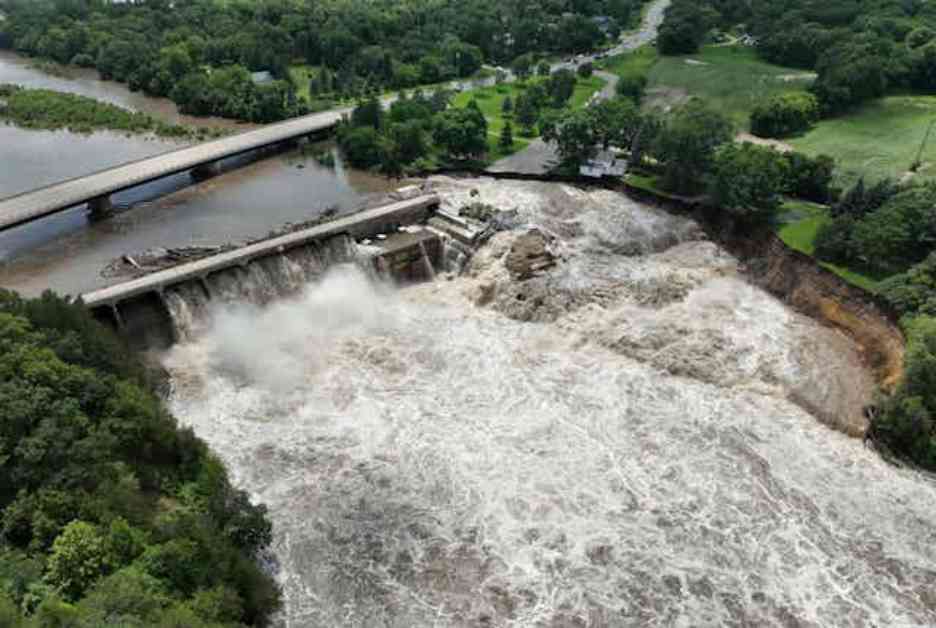The impact of climate change on aging dams in the United States is becoming increasingly concerning. Recently, heavy rainfall in the Upper Midwest put an aging dam at risk of failing. The Blue Earth River cut a path around the Rapidan Dam in Minnesota, indicating the imminent danger of a potential collapse. While evacuations were not deemed necessary at the time, the situation highlighted the vulnerabilities of aging dams in the face of changing climate conditions.
Hiba Baroud, an associate professor at Vanderbilt University, explains that flooding can stress dams in a changing climate, leading to erosion and potential breaches. The risk of dam failure depends on various factors, including the dam’s vulnerability and design. Overtopping, where water flows over a dam, is a significant cause of dam failures, highlighting the importance of proper maintenance and design to withstand such events.
The average age of dams in the U.S. is 57 years, with over 8,000 dams being over 90 years old. The American Society of Civil Engineers’ report card on infrastructure gave U.S. dams a “D” grade, indicating a pressing need for investment and maintenance. Additionally, over 2,300 high hazard potential dams lack emergency action plans, posing a significant risk to surrounding communities.
While decommissioning or replacing older dams can be costly and complex, regular maintenance and upgrades can enhance their resilience to natural hazards. The estimated cost to rehabilitate nonfederal dams in the U.S. is substantial, emphasizing the need for strategic investments in dam safety projects.
Climate change is exacerbating the stress on older dams, with the increased frequency and intensity of natural hazards posing a significant threat. It is crucial to update design procedures and construction standards to account for future climate projections and ensure the safety of existing dams. The near-failure of the Oroville Dam in 2017 serves as a stark reminder of the potential consequences of dam failures and the importance of proactive planning and maintenance.
Recent disasters in the U.S. should serve as warnings to government agencies and communities to prepare for potential dam failures through the development of emergency action plans. While the proportion of high-hazard potential dams with emergency action plans has increased, there is still a need for comprehensive preparedness to mitigate the cascading impacts of dam failures on various sectors of the economy.
Understanding the direct and indirect costs of dam failures is crucial for developing strategies to enhance the resilience of critical infrastructure systems. By investing in the maintenance and upgrading of aging dams, the U.S. can better prepare for future disasters and ensure the safety of communities and the integrity of essential infrastructure systems.






